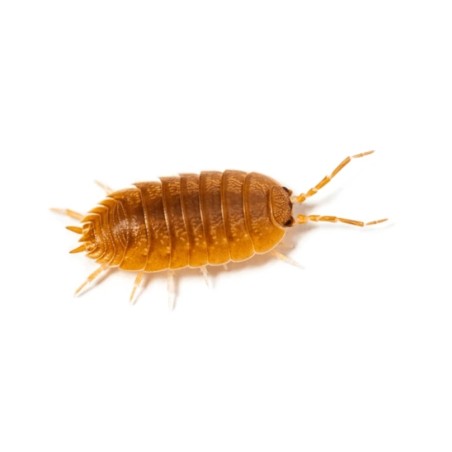

ATTENTION,
in December the general volume of shipments physiologically causes delivery times to increase, please be patient.
The last shipments of live food and other arthropods for 2025 will be Tuesday the 9th and Wednesday the 10th. We recommend Storage Stop.
After this date, we will only ship upon request and at the customer's own risk.




Starter colony of 10 specimens of mixed sizes: Land isopods Porcellio laevis Giant Orange Spanish.
Orange Porcellio laevis are one of the many varieties of the land crustacean species Porcellio laevis. This particular variant boasts specimens that can grow up to 2.5 cm in a development period that varies between 5 and 7 months.
Together with other easy-to-manage species, laevis are among the most prolific and also the most suitable for beginners!
• Customers are advised that the pieces purchased could be grouped in a package in order to optimize space. Orders with isopods are shipped ONLY on Monday, Tuesday and Wednesday.•
ATTENTION: upon receipt of shipments, place the packages containing isopods in a medium temperature environment for at least an hour (20/22°C) before opening them, so that they adapt to the climate difference. Below or above these temperatures the isopods will appear unresponsive, give them time to adjust before transferring them.
In nature they live on the ground of woods and forests, hidden among trunks and rocks. In your bioactive terrariums you should try to recreate this habitat. The substrate should be created with a mixture of leaves, soil and rotten wood to provide basic food. A layer of moss and sphagnum, pieces of bark and other leaves should be placed on the substrate, so that on one side the animals can find shelter and on the other the substrate does not dry out too quickly.
Food: fruit, vegetables, flowers, mushrooms, molds, Collembolafix Springtail Feed, Various leaves;
Temperature: They are also active at temperatures of 18/20°C, it is not recommended to keep them at temperatures above 28°C;
Humidity: They love a humid environment, humidity should be maintained between 50 and 70%;
You can safely keep them together with snails and slugs, millipedes, phasmids, beetles, etc. If instead you decide to include them as detritivores for cleaning your terrarium with reptiles and amphibians you must take into account that they could become a succulent snack rich in calcium and chitin;
The isopods decompose the organic waste material of your animals inside the terrarium, keeping it always clean, also creating high-quality humus for your plants. Being detritivores they do NOT feed on live plants, so there is no problem that they can eat healthy plants in your habitat.
You might also like